
Snøhetta has released details of their competition entry for a new landmark at Qianhai Bay, Shenzhen. No overall winner was chosen for the competition, with Snøhetta sharing second place with Sou Fujimoto’s floating tower design. Snøhetta’s scheme, titled “Lunar,” is inspired by the concept of data, and the question of whether a landmark should belong to a time or a place.
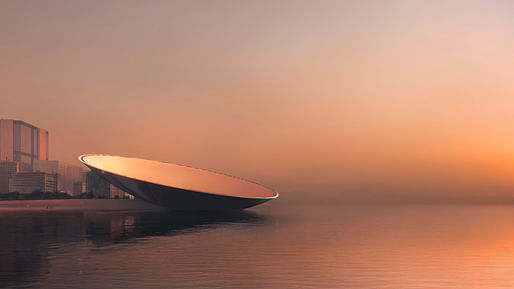
For the scheme’s design, Snøhetta reflected on the core role of a landmark, asking if such a structure should embody the land in which it sits, or the era in which it was built. “A landmark is a product of its context, a manifestation of the technology of its time,” says the team. “A landmark marks its land, and also marks its era.”
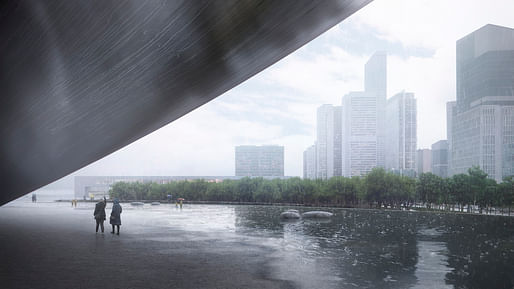
Evoking historical precedents such as the Eiffel Tower and Medieval cathedrals, the team notes that a landmark should reflect the technology of its time. Just as the Eiffel Tower became a symbol of France’s industrial prowess through an innovative use of steel construction, the design team sought to bring a similar thought process to Shenzhen in the era of data.
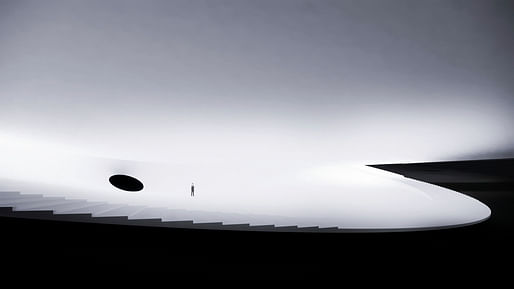
Snøhetta based their concept on the pioneering character of Shenzhen, a city which has historically been used as a primary interface between China and the wider world. Reflecting on both the maritime past and technological future of Shenzhen, the design team sees “Lunar” as “the remnants of a vessel that transmits data to the world, for the world.”
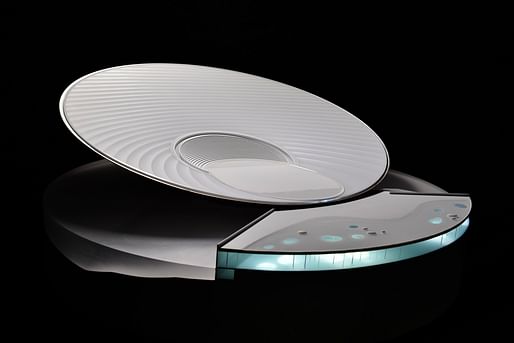
Referencing a quote from the medieval monk Yongjia Zhenjue that “One moon is reflected in many waters; all the water-moons reflect the one moon,” the team say that “The data of the Greater Bay Area and even the whole country will be reflected through the one moon – lunar.”
Functionally, Snøhetta’s design sees the concave public arena tilting towards the waterfront, surrounded by a floating walkway and a café courtyard. Between the landmark and Shenzhen’s Ocean Museum and Ferry Terminal, a vast parkland features a constructed wetland terrace, a mangrove park, and a bird watching platform.
Snøhetta’s design was awarded second place alongside Sou Fujimoto’s Sky Island tower, which we reported on last month. Reaching 268 meters (879 feet) in height, Fujimoto’s proposal consists of 99 individual towers grouped to appear as one structure looking onto the waterfront.

The two high-profile firms have been joined by many others recently unveiling proposed developments in Shenzhen. In May, MVRDV’s sustainable, mixed-use Shenzhen Terraces began construction, SANAA unveiled images of their Shenzhen Maritime Museum, and Grimshaw unveiled their mango tree-inspired design for Shenzhen’s international airport and transport hub.
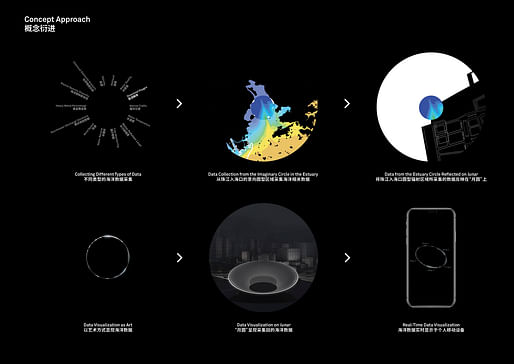
Zaha Hadid Architects have also unveiled two recent projects for the Chinese megacity: their competition-winning Tower C at the Shenzhen Bay Super Headquarters Base, and their Shenzhen Science and Technology Museum. Meanwhile, the team was recently selected for the design of Shenzhen’s Natural History Museum; comprising 3XN, B+H, and Zhubo Design.

No Comments
Block this user
Are you sure you want to block this user and hide all related comments throughout the site?
Archinect
This is your first comment on Archinect. Your comment will be visible once approved.